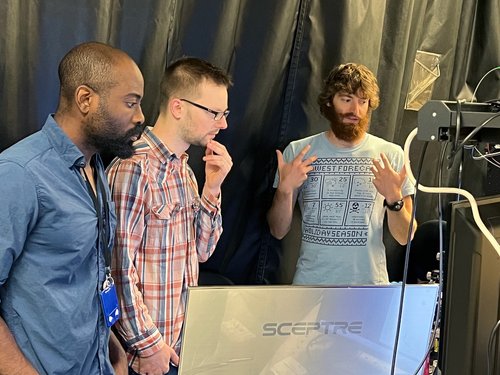
Students, educators, and early career professionals in the integrated photonics field recently convened in Rochester for deep, hands-on learning focused on the daunting challenge of packaging photonic integrated circuits (PICs) at AIM Photonics’ bi-annual PIC Testing and Packaging Workshop. The four-day workshop, which takes place at three different locations in Rochester, has been hailed by academics and industry insiders as one of the most effective hands-on learning opportunities for students and working professionals in the integrated photonics industry.
“As the nation’s only accessible 300 mm state-of-the-art facility for integrated silicon photonics test, assembly, and packaging, AIM Photonics is clearly a choice venue to host this workshop, but Rochester’s status as a national optics and photonics hub means that the region also has a wealth of additional, complementary resources to offer,” said Wade Cook, AIM Photonics executive director.

Specifically, Cook is referring to the advanced research labs at the University of Rochester’s Institute of Optics headed by Prof. Thomas G. Brown and the Integrated Photonics Group led by Stefan Preble, professor of electrical and microelectronic engineering in the Kate Gleason College of Engineering at the Rochester Institute of Technology (RIT) and lead organizer of the workshop.
“Our goal for this workshop is to introduce participants to the cutting-edge techniques used to test, analyze, and package photonic integrated circuits using the extensive state-of-the-art resources that are available here in Rochester,” said Preble.
After an initial tour of the AIM Photonic Test, Assembly and Packaging (TAP) facility, participants worked together in smaller groups rotating between each of the three locations, where they spent a full day conducting series of hands-on exercises and experiments designed to expose them to the many nuances of design, manufacture, packaging and characterization of photonic integrated circuits.

“We found that having smaller, focused groups not only offers our participants plenty of 1:1 time with workshop instructors, but it provides valuable opportunities to both observe and gain hands-on experience with the actual testing and packaging processes,” Preble said.
Because of its vast higher-ed, advanced R&D, and manufacturing resources, Rochester is proving to be the perfect environment for experiential learning in emerging technologies. To that end, AIM Photonics recently received $27.5M in funding from the State of New York, which includes $23 million in new equipment and tool upgrades to further enhance the institute’s test and packaging capabilities in Rochester and $4.5 million in operational support to amplify the consortium’s collaboration with western New York’s regional universities.

Due to its myriad complexities, the challenges associated with packaging photonic integrated circuits still remains one of the greatest barriers to the successful introduction of integrated photonics technologies more widely into high-volume manufacturing.
“It’s particularly important that business and academia—especially in advanced technology clusters and innovation hubs like Rochester—collaborate to combine our expertise and resources in order to develop a highly skilled workforce that will not only accelerate the development of manufacturable PIC packaging solutions, but is also technically agile enough to tackle the inevitable challenges that will continue to arise,” Cook added.